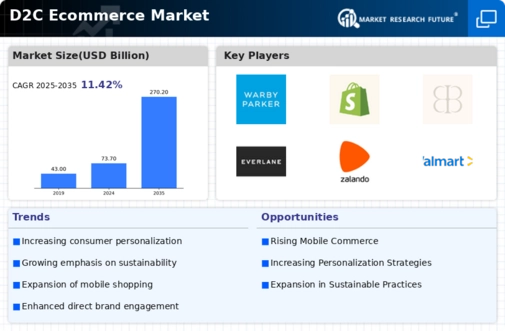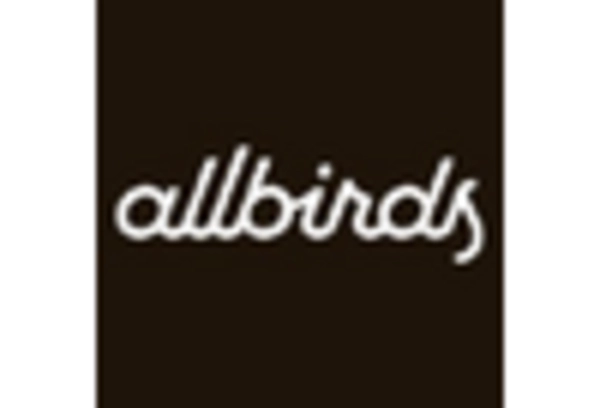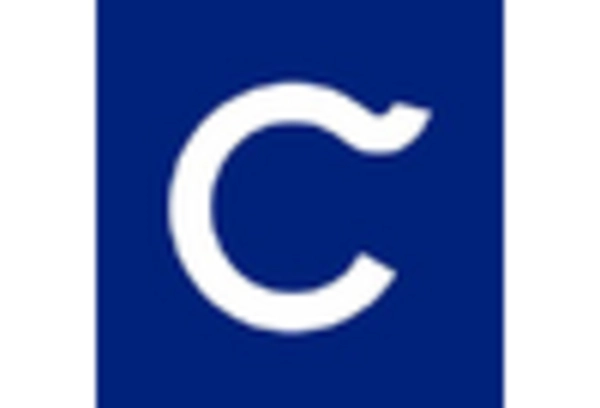The D2C Ecommerce Market is currently characterized by a dynamic competitive landscape, driven by rapid technological advancements and shifting consumer preferences. Major players such as Amazon (US), Nike (US), and Glossier (US) are at the forefront, each adopting distinct strategies to enhance their market positioning. Amazon (US) continues to leverage its vast logistics network and data analytics capabilities to optimize customer experiences, while Nike (US) focuses on direct-to-consumer sales through innovative digital platforms and personalized marketing. Glossier (US), on the other hand, emphasizes community engagement and social media-driven marketing to cultivate brand loyalty, thereby shaping a competitive environment that prioritizes customer-centric approaches.
In terms of business tactics, companies are increasingly localizing manufacturing and optimizing supply chains to enhance efficiency and responsiveness to market demands. The D2C Ecommerce Market appears moderately fragmented, with a mix of established brands and emerging startups vying for consumer attention. The collective influence of key players is significant, as they set trends that smaller companies often follow, thereby reinforcing a competitive structure that favors agility and innovation.
In August 2025, Nike (US) announced a strategic partnership with a leading tech firm to integrate augmented reality features into its online shopping experience. This move is likely to enhance customer engagement by allowing consumers to visualize products in real-time, thereby potentially increasing conversion rates. Such innovations not only reflect Nike's commitment to digital transformation but also position the brand as a leader in the evolving landscape of online retail.
In September 2025, Glossier (US) launched a new initiative aimed at sustainability by introducing a refillable packaging system for its skincare products. This strategic action underscores Glossier's focus on environmental responsibility, appealing to a growing segment of eco-conscious consumers. By prioritizing sustainability, Glossier not only differentiates itself in a crowded market but also aligns with broader consumer trends that favor brands with a commitment to social and environmental issues.
In October 2025, Amazon (US) expanded its D2C offerings by introducing a subscription model for its private label products, which could enhance customer retention and create a steady revenue stream. This strategic pivot indicates Amazon's intent to deepen its relationship with consumers, moving beyond traditional e-commerce to foster a more integrated shopping experience. Such initiatives may further solidify Amazon's dominance in the D2C space, as it continues to innovate in response to consumer needs.
As of October 2025, the D2C Ecommerce Market is witnessing trends that emphasize digitalization, sustainability, and the integration of artificial intelligence. Strategic alliances among companies are increasingly shaping the competitive landscape, enabling them to pool resources and expertise. Looking ahead, competitive differentiation is likely to evolve, with a pronounced shift from price-based competition to a focus on innovation, technology, and supply chain reliability. This transition suggests that companies that prioritize these elements will be better positioned to thrive in an increasingly complex market.

















Leave a Comment